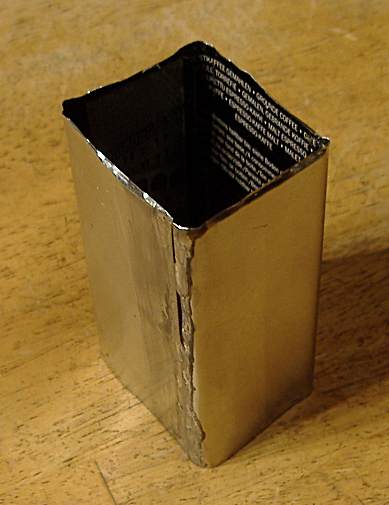deut-ediso: D6; Nickel-Cadmium-Akkumulator: Replica
deut-ediso: D6; Nickel-Cadmium-Akkumulator: Replica
Many German and Philips Battery / Mains models the Mains PSU LT is regulated by a series dropper resistor and most importantly a shunt DEAC, which is essentially a NiCd cell.
With age these deteriorate and the voltage may rise to 2V or more. An actual NiCd of similar or a little higher capacity in a replica box is the best solution. A modern NiMH is however more readily available. The “C” size is about 3500mAH to 4000mA and “D” size (if not a “fake” with AA or C inside) about 7000mAH to 10000mAH. This must be very reliably connected to the terminals of the replica box as it limits the voltage. Many NiMH should not however be left indefinitely on charge. The other disadvantage compared to NiCd is that the average voltage is about 250mV higher. On charge with no load the cell will rise to 1.5V and on load fully charged is about 1.37V.
A replica label has been uploaded and should be printed about 83mm high. It's not a scan, but drawn almost from scratch by overlay on rescaled photos. So some of the missing text was copied of D3.5 Cell and may be in error!
The example is not sealed to allow easy replacement of the NiMH cell. I only had a 3.5AH "C" size cell to hand but I hope to buy some real "D" size cells. Most on sale retail are only "D" size boxes with a "C" cell or even an "AA" cell in it! Double check stated capacity. Avoid highest capacity (More than 3700mAH C or more than 10000mAH D) as it's either a lie or the self discharge may be high.
Both Eneloop types and highest capacity types are less suitable as they can be destroyed by leaving on trickle charge when fully charged.

Outer made of coffee tin and upper edge bent in with pliers.

Cell holder. Should really be a "D" size cell. The "C" size shown is usuable, but more suited for DEAC D3, DEAC Varta D3.5 or DEAC D3.5 replacement cells.
The + pole (positive) is isolated by a power transistor heat sink plastic washer that goes through top of can and into a larger flat plastic washer on the under side. Use flexible wire, not solid. Optionally ad a 1A slow blow fuse if you are of a nervous disposition. The originals are not fused, they are just a larger rectangular version of later Sanyo cylindrical NiCd cells!
The soldering of the wires to the cell is easier if you file the corner edge of cap and corner edge of bottom. Oddly using Lead free tin solder with silver in it works better than older tin/lead solder. Perhaps the flux? Use a 25W or hotter iron with 3mm bit. Too low a power iron heats up the cell too much.
The "can" is negative and not isolated. I used 3.5mm bolts and nuts, but you might be able to source identical size to original.


Use "Pritt"/"UHU" style paper glue stick generously to stick on the label. It can be varnished or lacquered later, any kind not water based.
If you like you can add a replica bobble at the middle (gas relief valve?)

Fitted to a Philips Colette LD562AB
To thank the Author because you find the post helpful or well done.